Abstract
In Experiment 1, 3 budgerigars (Melopsittacus undulatus) were trained with food reinforcement to make low- or high-frequency calls in response to different color stimuli, C1 and C2 (a color-naming task), using a gradual response-differentiation procedure and an automatic call-recognition system. Thus, a call within a certain frequency band was reinforced in the presence of C1 ("C1 call"), and a call within a different band was reinforced in the presence of C2 ("C2 call"). In Experiment 2, all 3 budgerigars were trained in a form-to-color matching-to-sample task, alternating trial by trial with either the color-naming task (2 birds) or an identity color matching-to-sample task (1 bird). Sample stimuli for the new matching-to-sample task were forms (F1 or F2) and comparisons were the same two colors (C1 and C2). Given Sample F1 or F2, birds had to make a call to produce Comparison Pair C1 and C2. With F1 as the sample, a peck on C1 was reinforced; with F2 as the sample, a peck on C2 was reinforced. Although no particular call was specified in the presence of F1 and F2, 2 birds made the C1 call in the presence of F1 and the C2 call in the presence of F2. In Experiment 3, the bird that failed to match form and color calls in Experiment 2 and another bird were first trained in a color-to-form matching-to-sample task: C1 to F3 and C2 to F4. In this task, to produce the comparison pair of forms, a high call (or low for the other bird) was required in the presence of C1, and a low call (or high) was required in the presence of C2. Both birds were then trained with an identity matching-to-sample task in which sample and comparison stimuli were the same two forms, F3 and F4. Trials on the identity task alternated with the color-to-form trials. Although no particular call was required in the presence of Samples F3 and F4, both birds came to make the C1 call in the presence of F3 and the C2 call in the presence of F4. Our technique promises to be useful for the study of emergent vocal relations in budgerigars and other animals.
Full text
PDF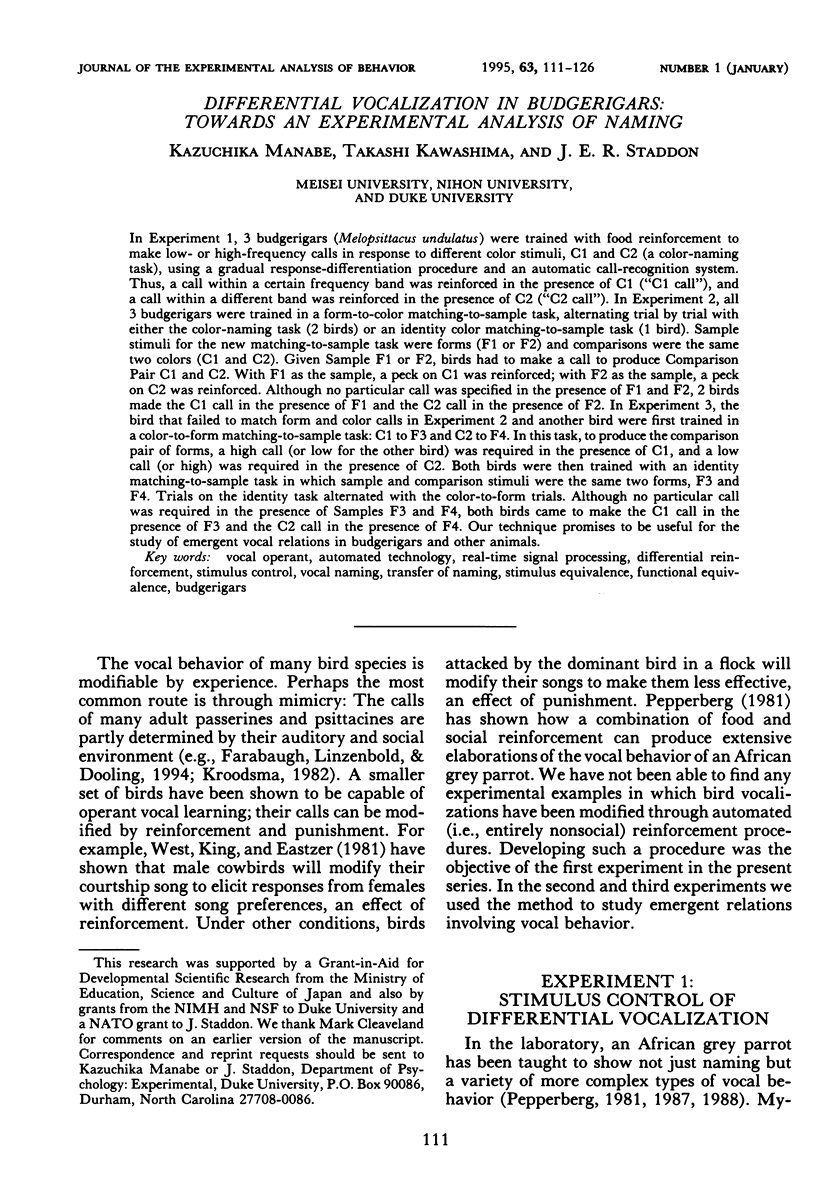

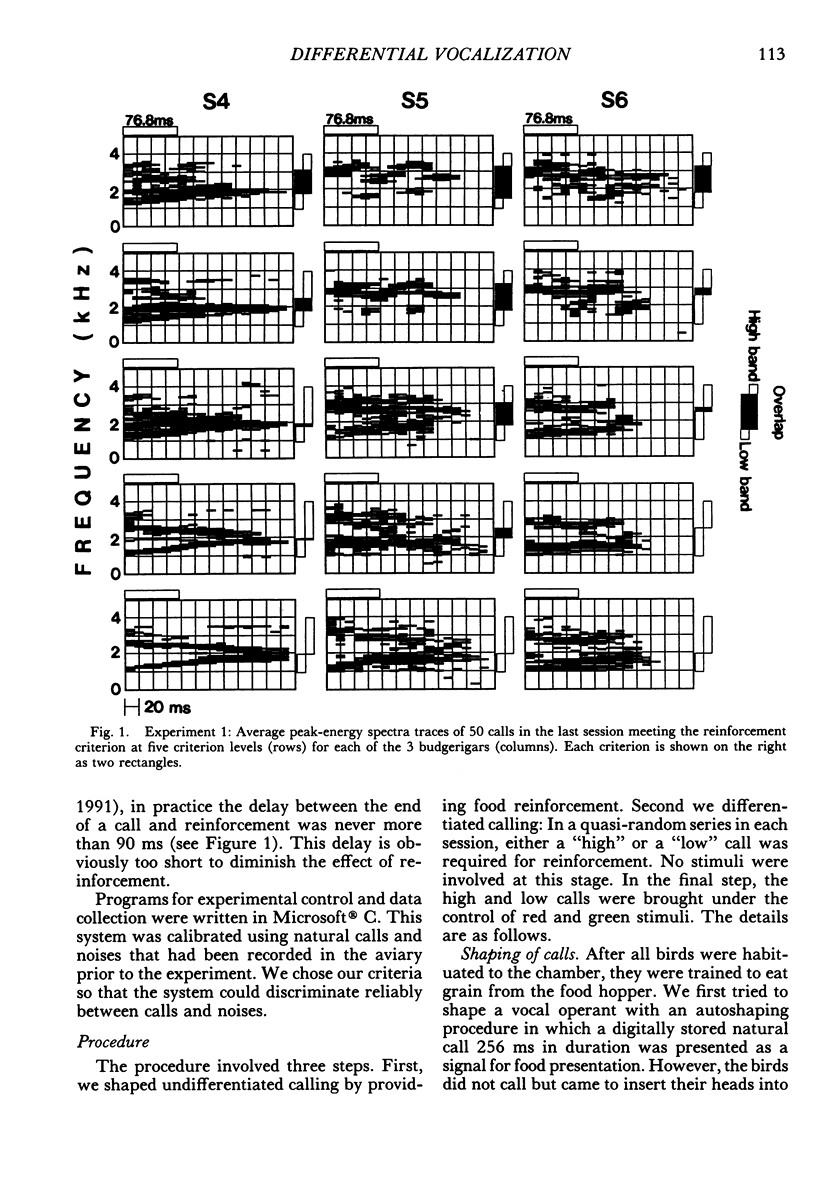
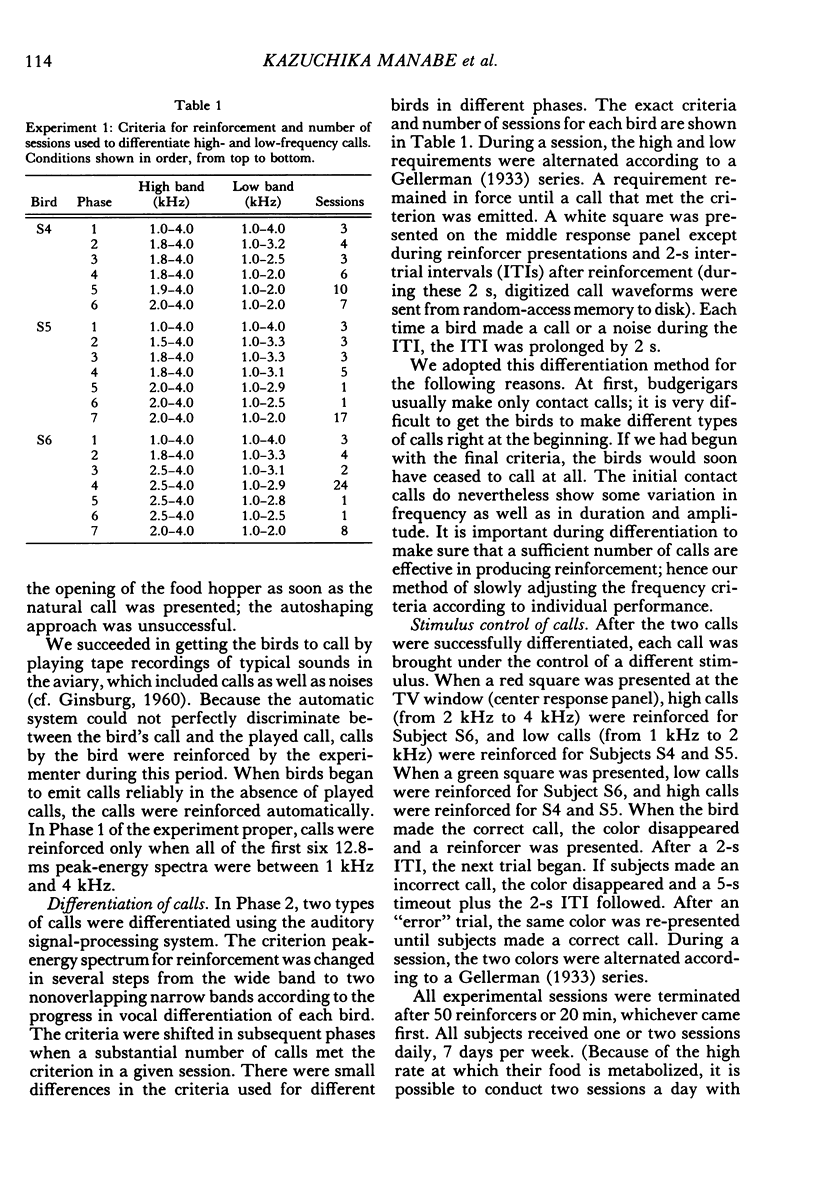

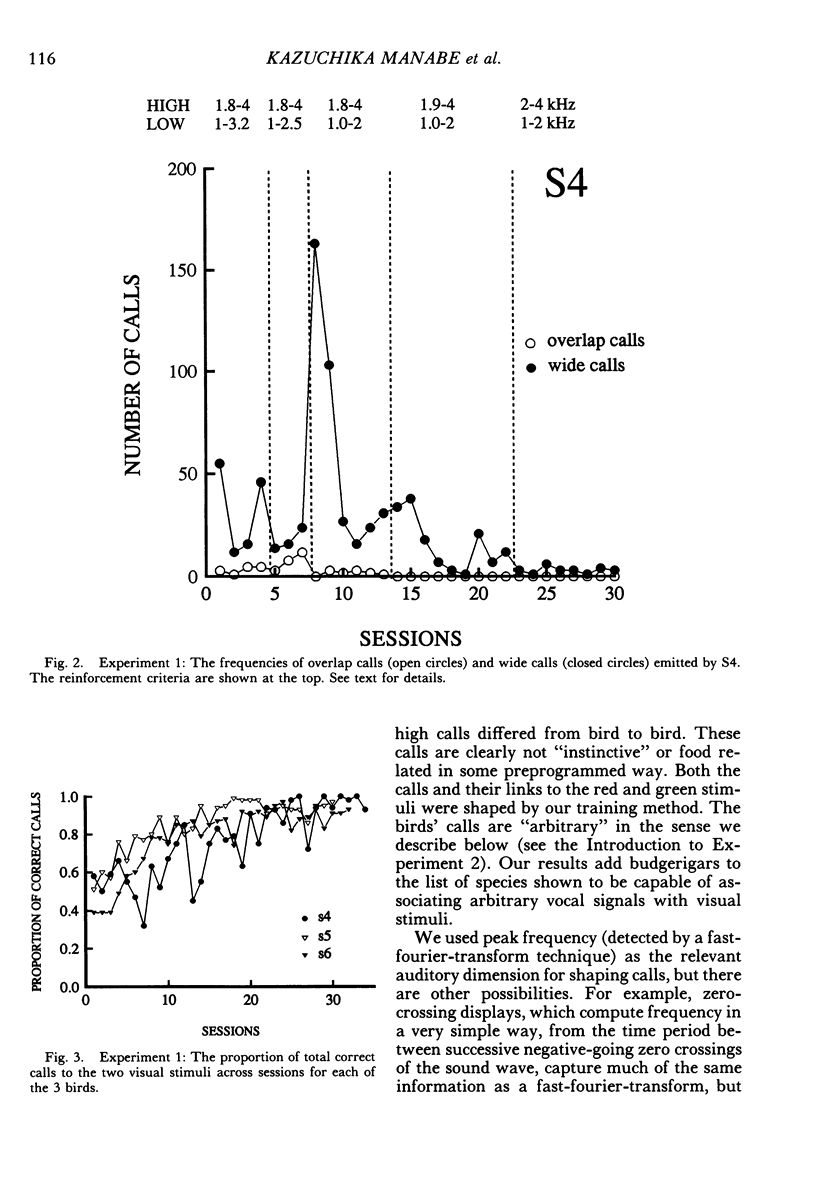
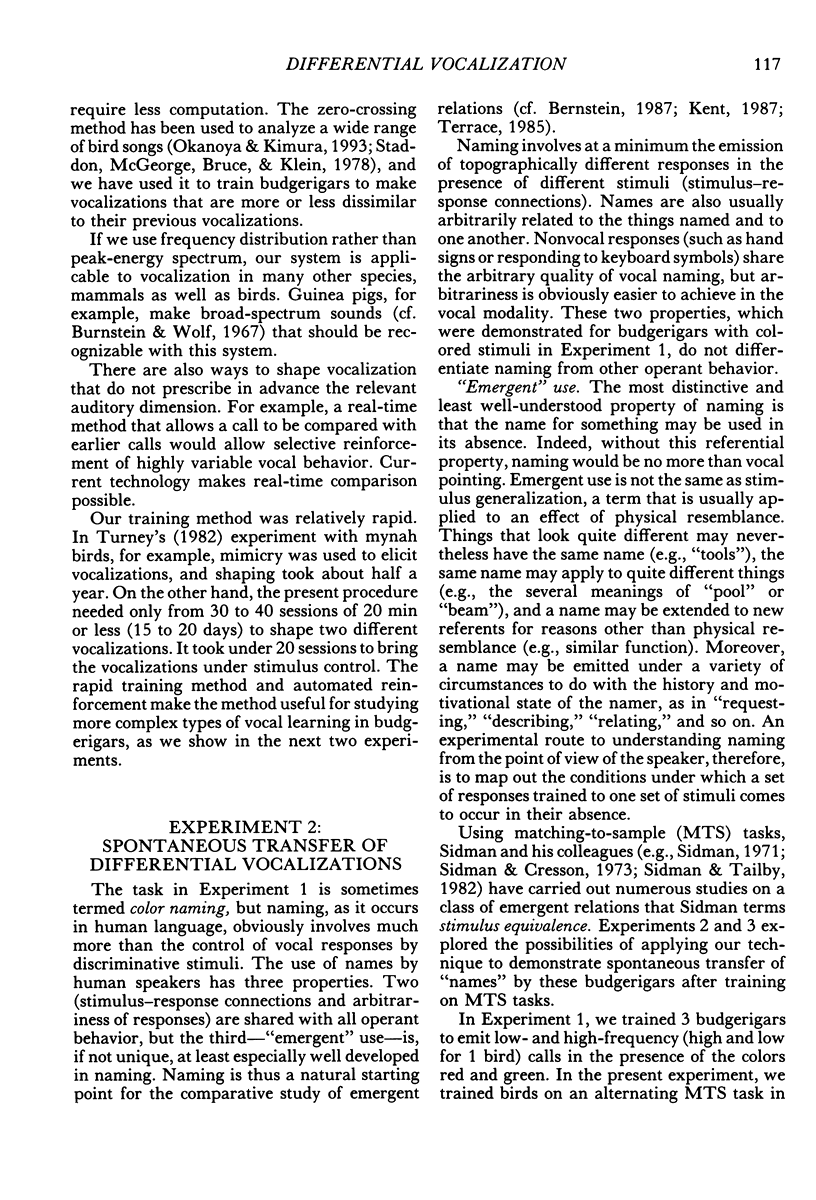
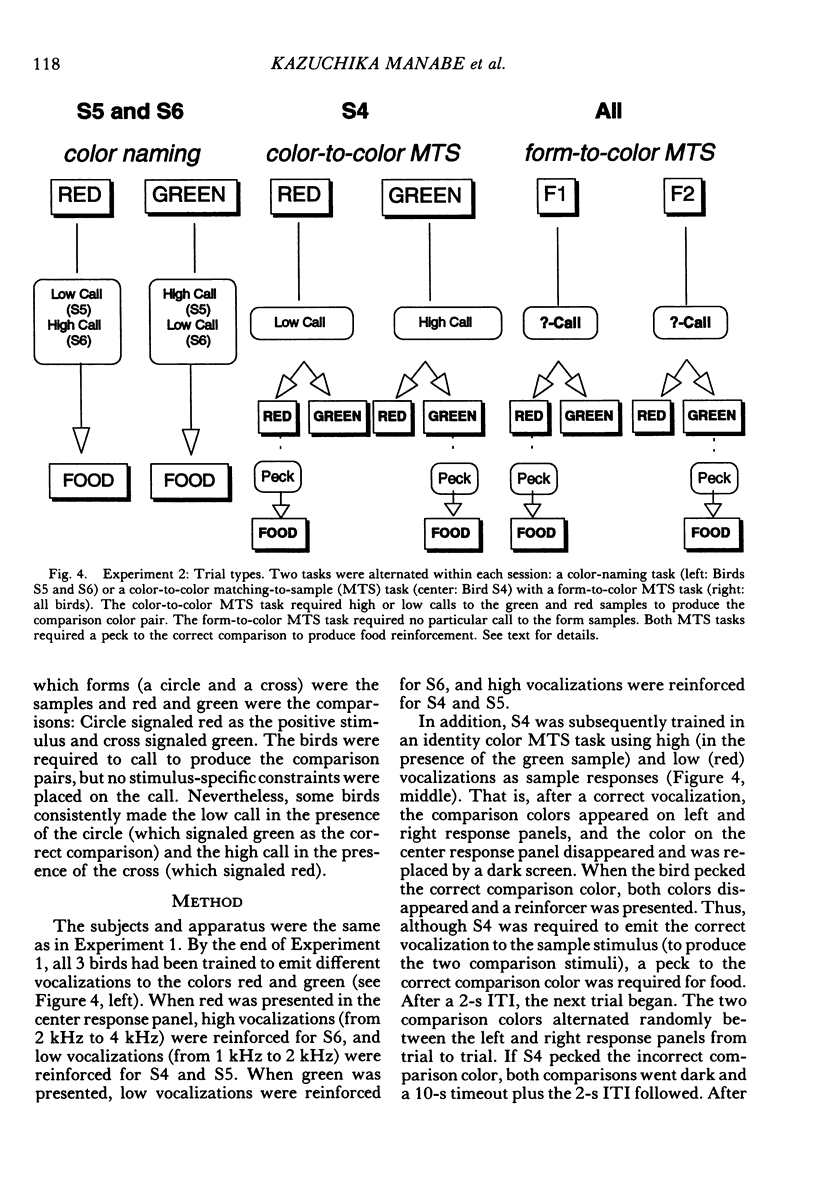
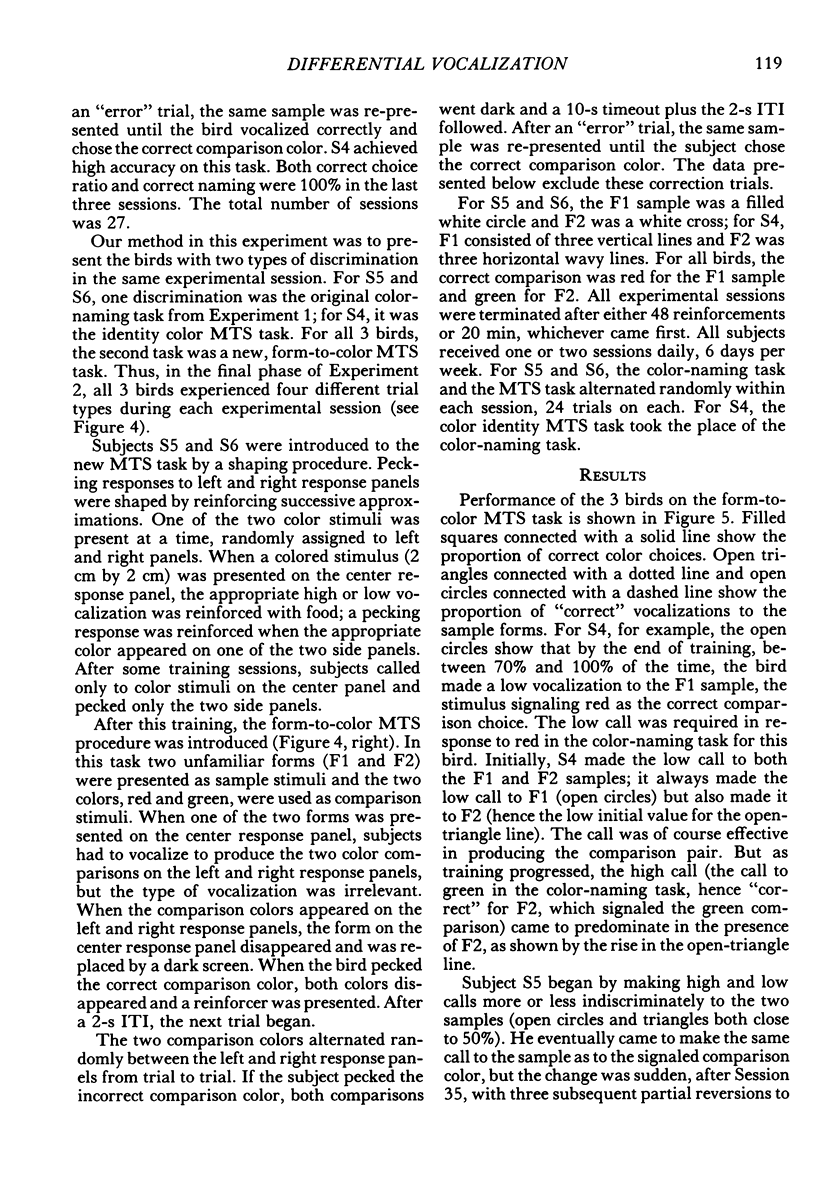
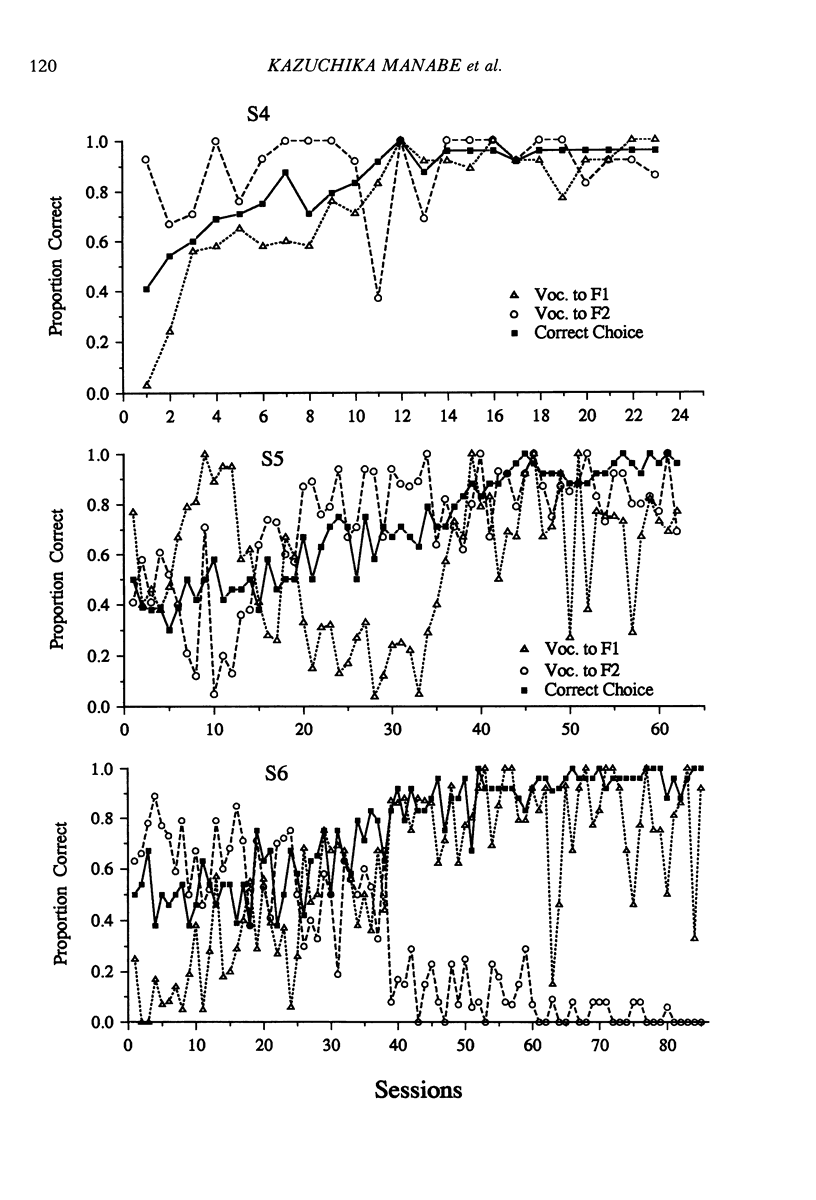



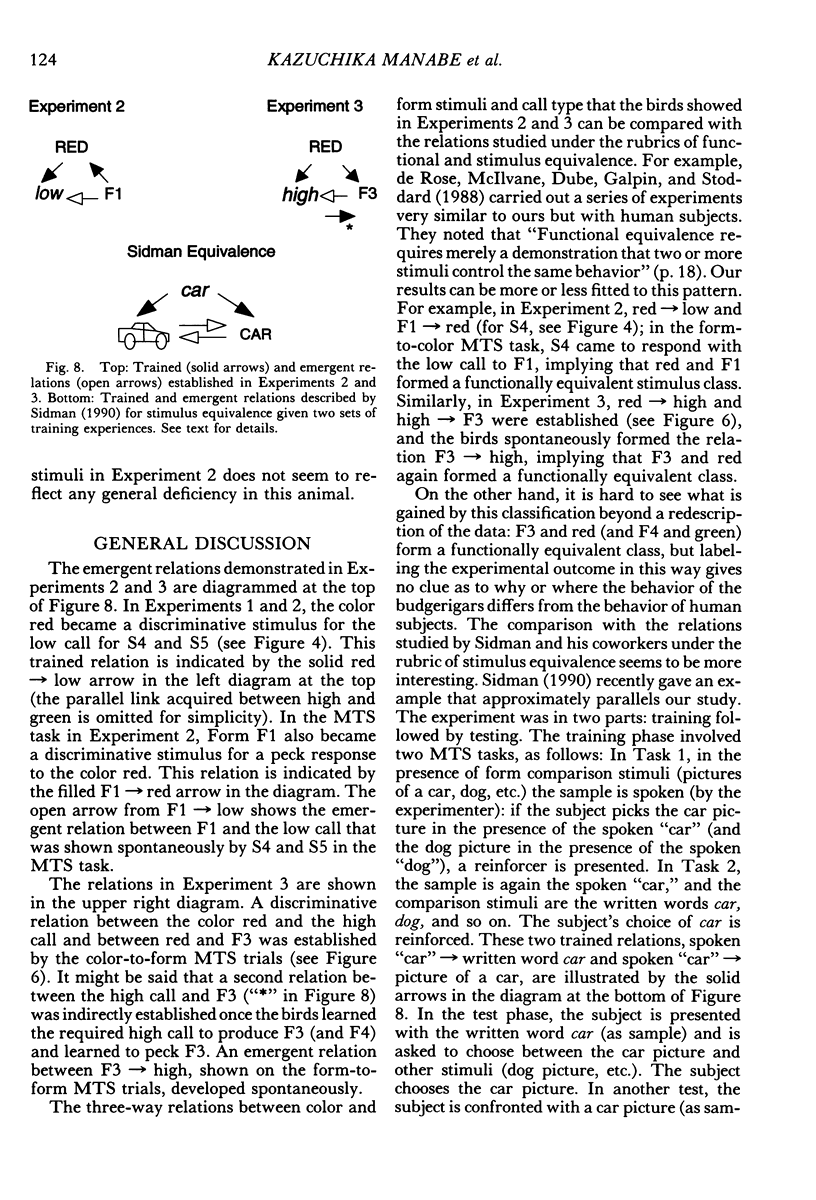
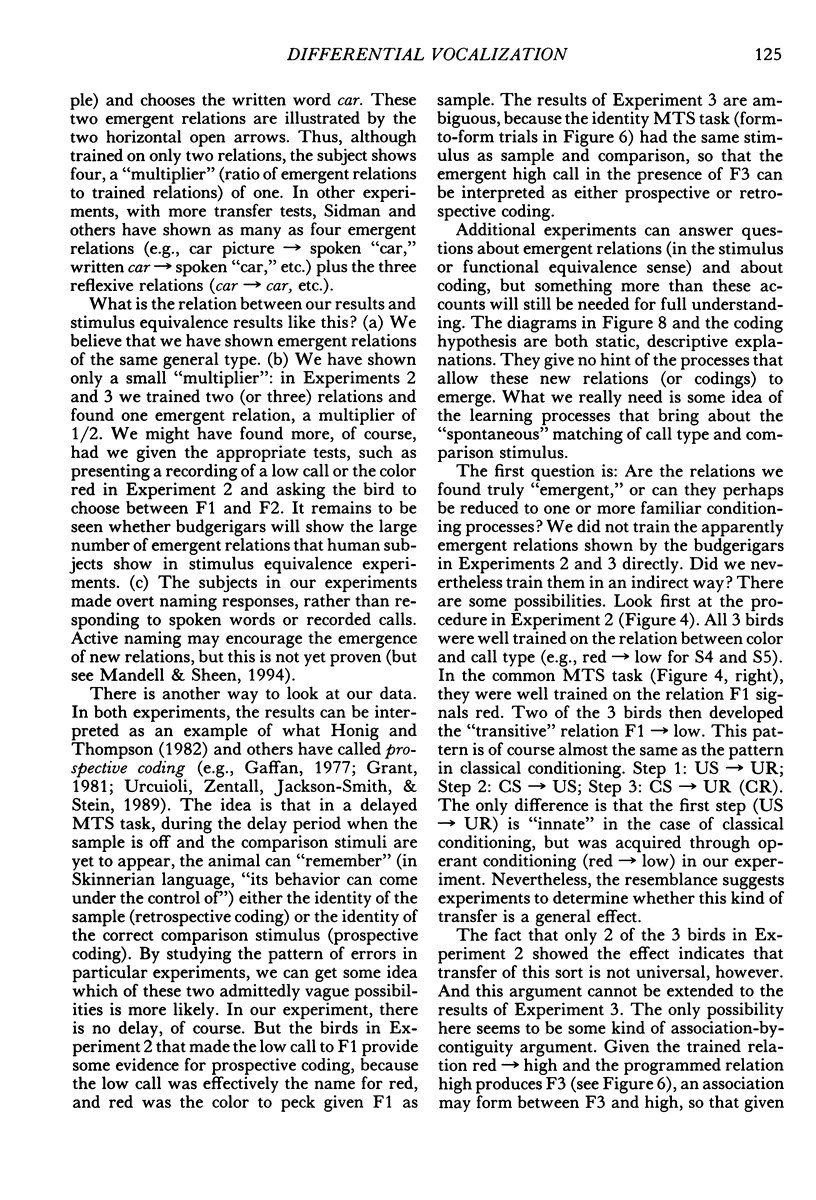
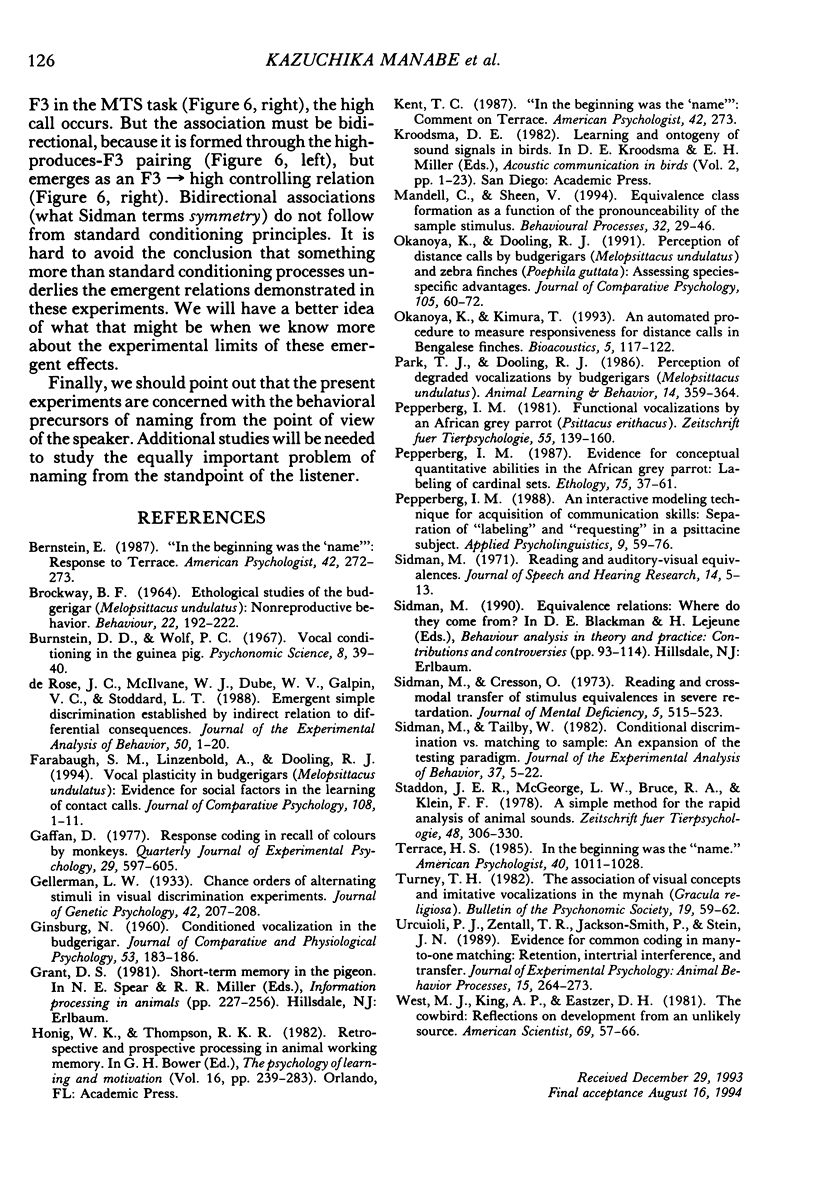
Selected References
These references are in PubMed. This may not be the complete list of references from this article.
- GINSBURG N. Conditioned vocalization in the budgerigar. J Comp Physiol Psychol. 1960 Apr;53:183–186. doi: 10.1037/h0048391. [DOI] [PubMed] [Google Scholar]
- Gaffan D. Response coding in recall of colours by monkeys. Q J Exp Psychol. 1977 Nov;29(4):597–605. doi: 10.1080/14640747708400635. [DOI] [PubMed] [Google Scholar]
- Okanoya K., Dooling R. J. Perception of distance calls by budgerigars (Melopsittacus undulatus) and zebra finches (Poephila guttata): assessing species-specific advantages. J Comp Psychol. 1991 Mar;105(1):60–72. doi: 10.1037/0735-7036.105.1.60. [DOI] [PubMed] [Google Scholar]
- Sidman M., Cresson O., Jr Reading and crossmodal transfer of stimulus equivalences in severe retardation. Am J Ment Defic. 1973 Mar;77(5):515–523. [PubMed] [Google Scholar]
- Sidman M. Reading and auditory-visual equivalences. J Speech Hear Res. 1971 Mar;14(1):5–13. doi: 10.1044/jshr.1401.05. [DOI] [PubMed] [Google Scholar]
- Sidman M., Tailby W. Conditional discrimination vs. matching to sample: an expansion of the testing paradigm. J Exp Anal Behav. 1982 Jan;37(1):5–22. doi: 10.1901/jeab.1982.37-5. [DOI] [PMC free article] [PubMed] [Google Scholar]
- Terrace H. S. In the beginning was the "name". Am Psychol. 1985 Sep;40(9):1011–1028. doi: 10.1037//0003-066x.40.9.1011. [DOI] [PubMed] [Google Scholar]
- de Rose J. C., McIlvane W. J., Dube W. V., Galpin V. C., Stoddard L. T. Emergent simple discrimination established by indirect relation to differential consequences. J Exp Anal Behav. 1988 Jul;50(1):1–20. doi: 10.1901/jeab.1988.50-1. [DOI] [PMC free article] [PubMed] [Google Scholar]


